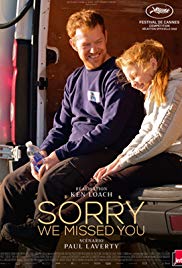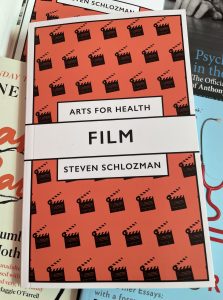Tips for using film in teaching
Film is a great teaching resource. Whether it’s a full-length movie, a clip or a short film on YouTube it’s a medium that everyone is familiar with and is accessible. Watching film immerses the viewer in the lives of others, building empathy and understanding. Like most forms of art this immersive experience also has the health-giving benefits of being in the parasympathetic state of ‘flow’ which reduces cortisol levels.
You could be more creative and invite your learners to make their own, all they need is their imagination and a smart phone

To set the scene watch this film clip from Patch Adams, produced in 1998, staring Robin Williams.
Practicalities & Planning
Be clear in your own mind about why you are using film as a resource.
Does the film help learners meet your chosen aims and objectives?
Make sure you watch the film (all of it) yourself before using it as a teaching resource. It’s not enough to watch the trailer or have read the book. Films have a habit of being very different from the book.
Do you need to watch all of it for the teaching session?
Are you asking the learners to watch the film before the teaching session or are you watching it all or selected parts as a group?
If you are showing the film or clips in the session make sure you have the correct equipment (speakers are essential for f2f teaching) and internet connection. You won’t be in breach of any legal stuff if you are showing a film or clip for educational purposes (where no admission fee has been charged)
If you want your learners to have watched and thought about the film before the session the following suggestions are worth considering:
- Give them plenty of notice
- Make sure they know which film you would like them to watch (there might be more than one film with the same title!) and how it is accessed and whether there is a fee (not everyone has Amazon Prime or Netflix).
- Be clear why you have asked them to watch the film.
- Let them know the length of the film.
- Give them a brief overview of the plot, this is important as there may be learners who find the choice of the film particularly difficult, e.g. stillbirth, migrant health. The information should not dissuade the learner from watching the film but will enable them to choose when and where they watch a film that might be triggering.
- State whether it’s a film that is suitable for family viewing or one with a more adult theme.
- It’s helpful to suggest they make a few notes during or after the film about the things that stood out to them as being important, and perhaps to notice how the film made them feel.
- You could give them some questions to consider while they are watching the film, but I tend to think this is distracting.
Discussing the Film
Anyone involved in medical education will probably have good facilitation skills, combine this with a little bit of preparation and this is all you need to lead a teaching session using film.
There are always a few people who have not watched the film prior to the discussion so it can be helpful to give a brief overview of the film or watch a short clip at the beginning of the session to set the scene.
It’s helpful to start by hearing everyone’s overall impression of the film. It’s good to do this in very small groups so the discussion is not anchored by someone stating loudly that they disliked the film or thought it was a waste of time! Plus it means the quieter learners get a chance to talk and as a result, are more likely to contribute to a bigger group discussion.
“Let’s start by discussing what our overall impression of the film was and why?”
Often the film or clip just acts as a catalyst for a thought-provoking discussion.
Comments from the small groups can be collated. It’s best if this part of the discussion is time-bound and you make notes of important themes so you can pick these up as you continue the discussion.
A quick search on the internet will usually identify a question bank for most films, but you do need to be selective as many of these questions are designed to review the quality of the film or discuss the narrative/characters from a literary perspective.
When setting questions, I’d suggest you refer to the reason why you ask the learners to watch the film.
It can be helpful to imagine the main character is a patient and use this concept to create your own questions.
Here is an example of a film I’ve used in teaching
Film- Sorry We Missed You directed by Ken Loach
Available on Amazon Prime (£3.40) or to purchase on DVD
Running Time 1hour 40mins
This film is about in-work poverty and the impact on individuals and families of zero hours contracts and poorly paid work in the care industry. It’s not suitable for children but would be educational for teenagers, young adults and non-medical family members.
Suggested questions:
- In 2-3s ‘What was your overall impression of the film and why?”
- What were the key issues for you?
How did the film make you feel and why? - Can you relate to this film, and why?
- What do you think the impact of the parent’s employment is on the children and the whole family?
- Do you think Ken Loach is trying to educate or entertain? And what do you think his message is?
- Is anyone to blame for the family’s circumstances?
- What resources are available in the community to help the family?If you are this family’s GP, what might your role be?
There are many hours of film suggestions on the pages of this site. If you have found any particularly effective films in your teaching please do share them with me

More resources…..
It was great to hear Steven Schlozman talk about the use of film in medical education at the 2022 DotMD conference. I had not previously contemplated how horror (a genre of film I avoid) can be used to help people understand how to manage the fear associated with chronic illness or anxiety. In anxiety it is often the anticipation that is worse than the reality, beautifully illustrated many horror films. Steven showed a clip from The Babadook to illustrate this.
It was also helpful to hear how film can be used as mirror to the medical world to explore how doctors are perceived and how this has changed through time. The arrogant heroic film doctor is not such a positive role model for doctors training in medicine today.
His book is an excellent resource for anyone wanting to develop their confidence in using film to teach and learn and has an interesting chapter on using film with patients.

Page created April 2022 Updated June 2022
